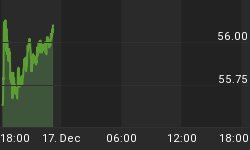According to a recent USA Today article there is a new fad on the rise in the world of finance. Termed "mirrored investing," this new concept being offered by several websites including Ditto Trade and Covestorallow investors to "mirror" the strategies of other, presumably more knowledgeable or successful traders.
Under this system, "master traders" place trades which are simultaneously executed for any investors following their strategy. Some traders that investors can choose to track charge a fee for their "guidance," on top of the trading charges assessed by the brokerage site processing the trades.
This new strategy is incredibly inventive and actually follows many of the psychological trends that have brought success to websites like Facebook, Myspace and Twitter. Unfortunately, while mirrored trading might be the "latest and greatest," if has some serious pitfalls from an investing perspective.
First and foremost, mirrored investing opens investors up to exploitation by traders, though not necessarily in the Bernie Madoff sense.
Given that this business model exists entirely in the virtual realm, how much oversight do you think sites like Ditto Trade or Covestor have of a "master trader's" activities? What's to stop them from having an account at a trading account at a different site and engaging in what is called "front-running," which is illegal for money managers?
In front-running, advisors make trades for their own accounts ahead of client accounts in order to take advantage of the market moves created by their clients' activity. A trader with clients mirroring their strategy on Ditto Trade could, for example, log onto E-trade to buy 100 shares of XYZ for their own account, and then enter the same trade on Ditto, which would be mirrored by anyone following their strategy. That trader could then sell the shares from the E-trade account after the share price has risen on buying among their Ditto followers.
Of course this obviously isn't the only risk run by clients who used mirrored investing. Clients have little knowledge of the background of a "master trader," other than what they are told. They may be entrusting their money to someone who has never been registered with the Financial Industry Regulatory Authority (FINRA) and knows little of securities law, or somebody who exaggerates their own experience and expertise. They could have just been laid off from a job in an unrelated field and decide to give trading a try.
Oddly enough, mirrored investing is not a completely new concept; though the delivery - being entirely only and taking on the feel of social networking - is original. There are many firms, often with far more brick and mortar, who have been letting clients mirror their trading for years. Our own firm has been using such a strategy since 1979. The difference is that we are registered with FINRA and the Securities Exchange Commission. Our companies and our employees are very highly regulated, so our system provides clients with increased safety and transparency.
Over the course of 30 years, we've seen dozens of fads come and go. From portfolio insurance to credit default swaps, we've outlasted them all. The problem is that most while innovative ideas can be profitable for their architects, they are often fundamentally unsound for one reason or another. Unfortunately, many people usually end up having to pay for the mistakes or gimmicks engineered by others.
Sadly, most people never look beyond the pitch. The same is true of investors buying annuities, life insurance, hedge funds or ETFs: salespeople use complicated language to describe complex products and systems, but they don't know how they really work. Salespeople only know the sales brochure. Their job is to sell, not to understand how the products work.
Still, one would hope that clients might be skeptical of buying products from someone who can't explain how a product works in simple terms.
In general, people would be better off sticking to the basics; quite often, the best solution isn't the most complicated. Some people are inherently turned off by strategies that aren't new and shiny with tons of moving parts that only a NASA engineer can imagine, but tried and true strategies can still do the trick. Slow and steady wins this race.















